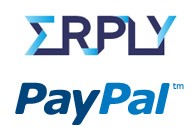 New startup solutions are becoming a big part of offline retail, providing real world impact in how we shop and make money offline. Take for example this recent news that we missed while it was fresh, but still is noteworthy: Estonian provider of business software, Erply, and Paypal have partnered to bring a seamless mobile payment solution to stores under Erply’s LikePOS. The solution allows customers to simply “check in” to a store when entering, then pay with Paypal at the checkout counter. It’s an innovation that’s quick and easy for consumers, and it provides retailers more insight into their customers and their shopping experiences.
New startup solutions are becoming a big part of offline retail, providing real world impact in how we shop and make money offline. Take for example this recent news that we missed while it was fresh, but still is noteworthy: Estonian provider of business software, Erply, and Paypal have partnered to bring a seamless mobile payment solution to stores under Erply’s LikePOS. The solution allows customers to simply “check in” to a store when entering, then pay with Paypal at the checkout counter. It’s an innovation that’s quick and easy for consumers, and it provides retailers more insight into their customers and their shopping experiences.
The solution also gives the opportunity to run different services, like customized offers and loyalty programs. The checkout process only requires the cashier to match the name and photo of a customer, which will likely give a quick transaction at the register. Funds are then made instantly available in the retailer’s PayPal account. And it seems that Erply has a good angle in entering the mobile payments sphere, around 45 000 stores use Erply globally, and plugging in with a suite of business software is such an easy way to sneak in to mobile payments, compared to other innovative payment startups starting from scratch.
The solution charges a flat 2.7% transaction fee, which is about the same as iZettle’s 2.75% transaction fee for standard credit cards. The Swedish iOS point of sale solution doesn’t change the payment dynamic the same way LikePOS does, but it’s fairly easy to predict that accessible mobile payments (even tied to a credit card) is going to have an impact on offline retailers the have normally dealt in cash. With 50,000 users, iZettle claims to have increased the number of POS card acceptance terminals in the Nordics by 10 percent.
Another smaller innovation that we haven’t covered but comes to mind is Just-Eat. Apparently many of the online food delivery service’s competitors take orders online, then send a fax to the local restaurant who will make the delivery. Just-Eat improves the speed and is able to have the restaurants confirm the order by installing a terminal at each restaurant in their network. It makes Just-Eat much more efficient, and improves the positive response rate of their deliveries.




